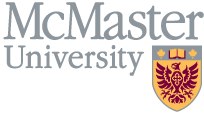Article pour les cliniciens
Les traitements non invasifs pour la lombalgie: une revue de l'efficacité comparée n° 169.
PMID: 26985522
-
Médecine familiale (MF)/Médecine générale (MG)Relevance - 6/7
Intérêt médiatique - 5/7 -
Médecine interne générale - Soins primairesRelevance - 6/7
Intérêt médiatique - 5/7 -
Intérêt spécial - Douleur - MédecinRelevance - 6/7
Intérêt médiatique - 5/7 -
Médecine interne (voir sous-spécialités ci-dessous)Relevance - 5/7
Intérêt médiatique - 6/7 -
- RhumatologieRelevance - 5/7
Intérêt médiatique - 5/7
Résumé (en anglais)
OBJECTIVES: Low back pain is common, and many pharmacological and nonpharmacological therapies are available. This review examines the evidence on the comparative benefits and harms of noninvasive treatments for low back pain.
DATA SOURCES: A prior systematic review (searches through October 2008), electronic databases (Ovid MEDLINE® and the Cochrane Libraries, January 2008 to April 2015), reference lists, and clinical trials registries.
REVIEW METHODS: Using predefined criteria, we selected systematic reviews of randomized trials of pharmacological treatments (acetaminophen, nonsteroidal anti-inflammatory drugs [NSAIDs], opioids, skeletal muscle relaxants, benzodiazepines, antidepressants, antiseizure medications, and systemic corticosteroids) and nonpharmacological treatments (psychological therapies, multidisciplinary rehabilitation, spinal manipulation, acupuncture, massage, exercise and related therapies, and various physical modalities) for nonradicular or radicular low back pain that addressed effectiveness or harms versus placebo, no treatment, usual care, a sham therapy, an inactive therapy, or another active therapy. We also included randomized trials that were not in systematic reviews. The quality of included studies was assessed, data were extracted, and results were summarized qualitatively based on the totality of the evidence.
RESULTS: Of the 2,545 citations identified at the title and abstract level, a total of 156 publications were included. Most trials enrolled patients with pain symptoms of at least moderate intensity (e.g., >5 on a 0- to 10-point numeric rating scale for pain). Across interventions, pain intensity was the most commonly reported outcome, followed by back-specific function. When present, observed benefits for pain were generally in the small (5 to 10 points on a 0- to 100-point visual analog scale or 0.5 to 1.0 points on a 0- to 10-point numeric rating scale) to moderate (10 to 20 points) range. Effects on function were generally smaller than effects on pain; in some cases, there were positive effects on pain but no effects on function, and fewer studies measured function than pain. Benefits were mostly measured at short-term followup. For acute low back pain, evidence suggested that NSAIDs (strength of evidence [SOE]: low to moderate), skeletal muscle relaxants (SOE: moderate), opioids (SOE: low), exercise (SOE: low), and superficial heat (SOE: moderate) are more effective than placebo, no intervention, or usual care, and that acetaminophen (SOE: low) and systemic corticosteroids (SOE: low) are no more effective than placebo. For chronic low back pain, effective therapies versus placebo, sham, no treatment, usual care, or wait list are NSAIDs, opioids, tramadol, duloxetine, multidisciplinary rehabilitation, acupuncture, and exercise (SOE: moderate) and benzodiazepines, psychological therapies, massage, yoga, tai chi, and low-level laser therapy (SOE: low); spinal manipulation was as effective as other active interventions (SOE: moderate). Few trials evaluated the effectiveness of treatments for radicular low back pain, but the available evidence found that benzodiazepines, corticosteroids, traction, and spinal manipulation were not effective or were associated with small effects (SOE: low). Relatively few trials directly compared the effectiveness of different medications or different nonpharmacological therapies, or compared pharmacological versus nonpharmacological therapies, and they generally found no clear differences in effects. Pharmacological therapies were associated with increased risk of adverse events versus placebo (SOE: low to moderate). Trials were not designed or powered to detect serious harms from pharmacological therapies. Although rates appeared to be low and there was not an increased risk of serious harms versus placebo, this does not rule out significant risk from some treatments. For nonpharmacological therapies, assessment of harms was suboptimal, but serious harms appeared to be rare (SOE: low).
CONCLUSIONS: A number of pharmacological and nonpharmacological noninvasive treatments for low back pain are associated with small to moderate, primarily short-term effects on pain versus placebo, sham, wait list, or no treatment. Effects on function were generally smaller than effects on pain. More research is needed to understand optimal selection of treatments, effective combinations and sequencing of treatments, effectiveness of treatments for radicular low back pain, and effectiveness on outcomes other than pain and function.
Commentaires cliniques (en anglais)
Family Medicine (FM)/General Practice (GP)
This article presents a good review of non-invasive treatments for LBP. Unfortunately the lack of good charts, tables and figures makes the reading more dense than it should be. A summary of this article with clear tables and figures could be very useful.
General Internal Medicine-Primary Care(US)
This is a well conducted review of therapy for both acute and chronic low back pain. Most of these results have been previously described, but the review conveniently summarizes and updates both pharmacologic and nonpharmacologic therapy comparisons. Unfortunately, conclusions remain challenging as most of the accumulated evidence comparing different modalities is rated as either insufficient or low quality. One new finding that will generate discussion is that tricyclic antidepressants were found to be no different from placebo for improving pain and function in chronic low back pain.
Special Interest - Pain -- Physician
This systematic review assessed 2545 publications on noninvasive treatments for back pain and included only 156 publications. The most commonly reported end point of these trials was pain and the observed benefits of all treatments was generally small to moderate at best. Effects on function were less often reported and generally less than the effect on pain. Most of the trials reported were of short duration so the durability of any benefits was uncertain. For acute low back pain, NSAIDs, muscle relaxants, opioids and superficial heat have low to moderate efficacy while acetaminophen and steroids are no better than placebo. For chronic low back pain NSAIDs, opioids, Tramadol, Duloxetine, multidisciplinary rehabilitation, acupuncture, exercise, benzodiazepines, psychological therapies, massage, yoga, tai chi, laser therapy and spinal manipulation showed moderate efficacy. In conclusion this was a large publication with little useful information or evidence of efficacy for any treatment.



